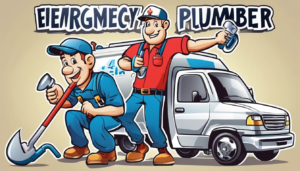
You’re about to install a deck guardian system on your uneven deck, but where do you start? Assessing the deck’s condition is crucial, as it will help you identify areas that need adjustment and ensure a safe installation. As you evaluate the deck, you’ll likely notice varying degrees of unevenness, making it essential to plan carefully. You’ll need to consider factors like local building codes, post placement, and the type of fastening system to use. But before you can tackle these challenges, there’s a critical step to take – and that’s where we’ll start. mendham deck builder.
Assessing the Uneven Deck Surface
Before installing a deck guardian, you’ll need to assess the uneven deck surface. This involves measuring the deck’s length, width, and height to identify the areas that need adjustment. You’ll also need to check for any obstructions, such as nails, screws, or other objects that could interfere with the deck guardian’s installation.
Walk the deck’s surface, checking for any uneven boards or gaps between them. Make a note of the areas that need attention, and take photos or videos to document the deck’s condition. This will help you plan the installation and ensure that the deck guardian fits properly.
You’ll also need to assess the deck’s support structure. Check the joists and beams to ensure they’re sturdy enough to support the deck guardian. If the deck is old or damaged, you may need to make repairs before installing the deck guardian. By thoroughly assessing the deck’s surface and structure, you’ll be able to plan a successful installation and ensure a safe and stable deck guardian.
Preparing the Deck for Installation
With the uneven deck surface assessed, it’s time to start preparing the deck for installation. You’ll need to clean the deck thoroughly to ensure a smooth and even installation process.
Remove any debris, dirt, or old finish from the deck boards and joists. Use a deck cleaner or a mixture of bleach and water to scrub away any stubborn stains or mildew.
Next, inspect the deck boards and joists for any damage or rot. Replace any damaged or rotten boards to ensure the deck is structurally sound.
If you have a wooden deck, check for any signs of warping or cupping, and plane the boards if necessary.
Make sure the deck is completely dry before proceeding with the installation. This is especially important if you’re installing a waterproofing membrane or a deck coating system.
Remove any loose or damaged flashing around chimneys, vents, or skylights to prevent water damage.
Choosing the Right Fastening System
Investment in a reliable fastening system is crucial to ensure your deck remains safe and secure. When choosing the right fastening system for your deck guardian installation, you should consider the type of deck boards and railing posts you’re using. Hidden fasteners are ideal for composite or hardwood decks, while face-screwing is better suited for pressure-treated wood decks.
You should also think about the load requirements of your deck and the level of protection you need. A deck guardian system that includes a sturdy fastening system, such as structural screws or lag screws, can help distribute weight evenly and prevent collapse.
Additionally, consider the durability and corrosion resistance of the fastening system, especially if you live in an area with high humidity or extreme weather conditions.
When selecting a fastening system, make sure to follow the manufacturer’s recommendations and local building codes. It’s also essential to choose a system that’s compatible with your deck guardian and can withstand the elements and heavy use. By selecting the right fastening system, you can ensure your deck remains sturdy and secure for years to come.
Installing Rail Posts on Uneven Decks
When dealing with uneven decks, installing rail posts can be a challenging task. You’ll need to find a way to level the posts and ensure they’re securely attached to the deck.
To start, assess the unevenness of your deck and identify the areas where the posts will be installed. You may need to use shims or adjust the post base to compensate for the unevenness.
As you install the rail posts, keep in mind that the deck’s uneven surface can affect the post’s stability. Use a level to ensure the post is plumb and secure it to the deck using a post anchor or a lag screw.
If the deck’s joists are uneven, you may need to use a adjustable post base to level the post.
When installing rail posts on uneven decks, it’s essential to work patiently and methodically. Take your time to assess the deck’s surface and make the necessary adjustments to ensure the posts are securely attached.
Ensuring Stability and Code Compliance
Ensuring the stability of your deck guardrail is crucial for safety and code compliance. You’ll need to check your local building codes for specific requirements, but generally, your deck guardrail should be able to withstand a minimum of 50 pounds of force per square foot.
To ensure stability, you’ll want to secure your rail posts to the deck frame using screws or bolts. Make sure the screws or bolts are countersunk into the deck frame to prevent tripping hazards.
When securing your rail posts, ensure they’re level and plumb. Use a level tool to check the post’s vertical alignment and a carpenter’s square to check its horizontal alignment.
If your deck has uneven surfaces or slopes, you may need to use shims or adjust the post’s base to ensure levelness. Additionally, make sure your deck guardrail is securely attached to the deck frame at regular intervals, typically every 4 feet.
Conclusion
You’ve now got the strategies to tackle uneven deck surfaces with a Deck Guardian installation. Remember to assess and document the deck’s condition, and plan accordingly. By choosing the right fastening system, installing rail posts with patience, and ensuring stability and code compliance, you’ll achieve a secure and sturdy deck. With these tips, you’ll be well on your way to a successful Deck Guardian installation that meets local building codes and withstands the test of time.





